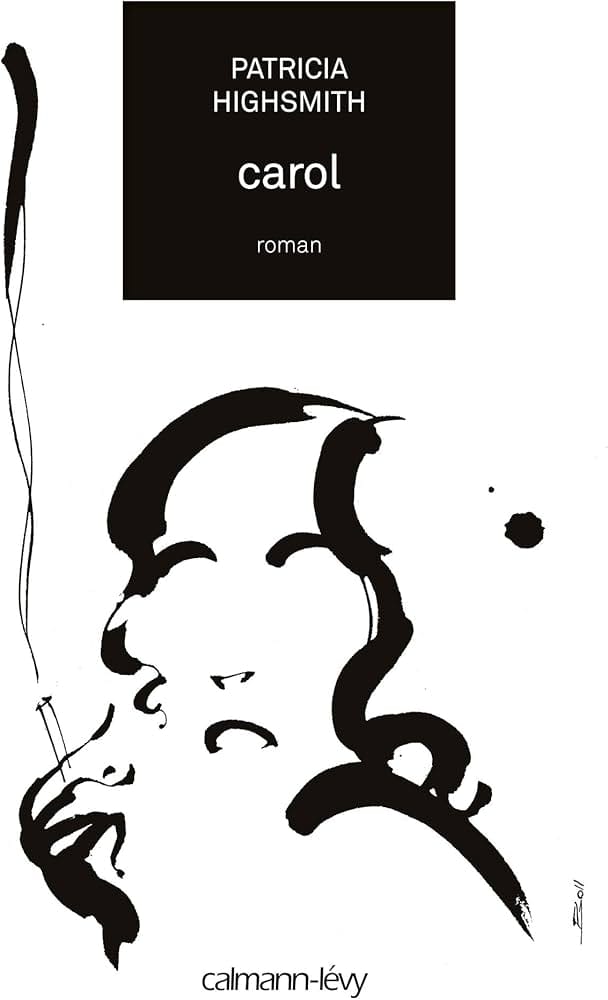While Patricia Highsmith is best known for her psychological thrillers, Carol (originally published in 1952 as The Price of Salt) stands out as a unique and profound exploration of love and identity. Though it may not feature the usual Christmas motifs of carolers, family gatherings, or holiday cheer, Carol remains one of the most intellectually stimulating and dreamlike works set against the holiday season. Highsmith’s novel is a beautifully complex exploration of self-discovery, societal constraints, and forbidden love, making it a distinctive addition to the canon of Christmas literature.
A Dreamlike Holiday Journey
At first glance, Carol doesn’t immediately fit the typical mold of a Christmas story. It is not filled with festive decorations, snow-covered landscapes, or the jubilant spirit often associated with the holidays. However, the novel’s winter setting, beginning during a cold Christmas season, provides a backdrop for the emotional and psychological journey of the characters that parallels the reflective and transformative qualities often present in holiday narratives.
The story follows Therese, a young aspiring set designer, and Carol, a glamorous older woman navigating a painful divorce. The two women’s paths cross in an emotionally charged, yet tender, relationship that develops over the course of the novel. Carol is not just a love story; it’s a delicate meditation on desire, freedom, and the emotional cost of societal rejection, themes that resonate deeply in the winter months when the year’s cyclical passage reminds us of transformation and change.
What makes Carol an intellectual Christmas tale is Highsmith’s ability to delve into the inner worlds of her characters with such precision. Through Therese’s perspective, we witness her journey of self-discovery, as she moves from naive uncertainty to a deep, passionate connection with Carol. Highsmith’s portrayal of Therese’s emotional evolution is nuanced and thoughtful, reflecting the intellectual depth that makes Carol more than a simple romance.


The Oneric Quality of Carol
There is also a distinctly dreamlike, or oneric, quality to Highsmith’s writing in Carol. The novel unfolds in a way that feels less like a straightforward narrative and more like a meditation on fleeting emotions, unspoken connections, and the surreal atmosphere of desire. The cold winter landscapes, muted lighting, and the way time seems to stretch and bend in the characters’ emotional lives all contribute to the sense that Carol is not merely a story but an experience of the subconscious.
The novel’s dreamlike qualities are not overt; rather, they manifest in the subtle tensions between characters, in the fleeting moments of intimacy, and in the fleeting glimpses of a love that is both beautiful and forbidden. Highsmith allows the reader to linger in these emotional spaces, creating an atmosphere that feels ethereal and transformative, much like the most introspective moments of the Christmas season. The feeling of longing, the complex dance of desire and uncertainty, and the sense of transformation that runs through the book are all quintessentially Christmas-like, even if they are expressed in a more complex, adult way.
Todd Haynes’ Carol: A Cinematic Exploration of Love and Desire
In 2015, Todd Haynes brought Highsmith’s Carol to the screen with a film adaptation that expertly captured the novel’s intellectual depth and oneric atmosphere. Haynes, known for his lush and visually evocative films, translates Highsmith’s psychological nuances and dreamlike tone into a visually stunning cinematic experience.
Cate Blanchett’s portrayal of Carol is a masterclass in subtlety. Blanchett conveys the character’s complexity—her outward elegance and internal fragility—with such precision that Carol’s vulnerability is just as palpable as her strength. Rooney Mara, as Therese, embodies the character’s evolution from innocent observer to empowered lover, capturing the quiet intensity that defines Therese’s journey.
The film’s visual style is a key component in translating the novel’s dreamlike quality. Haynes uses soft lighting, muted color palettes, and intimate framing to reflect the emotional closeness between Carol and Therese while also emphasizing the isolation and tension that accompany their love. The wintery landscapes and confined spaces within the film echo the novel’s sense of being trapped between desire and societal pressure. Haynes’ ability to create a world where the emotional and intellectual stakes are as high as the characters’ desires enhances the themes of transformation and personal awakening that run throughout Carol.


A Christmas Story for the Mind and Heart
Ultimately, Carol is a Christmas story for those who seek a deeper, more intellectual exploration of love, identity, and self-discovery. It may not feature the typical trappings of holiday literature, but its emotional and psychological richness makes it a powerful reflection on the transformative nature of love and the journey of self-realization. Much like the holiday season itself, Carol offers a space for introspection and growth, where emotions can be both joyous and painful, but always deeply meaningful.
In both its literary and cinematic forms, Carol stands as one of the most intellectually stimulating and dreamlike works of the Christmas genre. Highsmith’s novel invites us to explore the complexities of human connection, the societal barriers that restrict our desires, and the quiet, transformative moments of realization that define us. As a holiday story, Carol serves as a reminder that Christmas is not only a time for outward celebration but also a season for personal transformation and reflection—a sentiment that resonates deeply within Highsmith’s unforgettable work.









